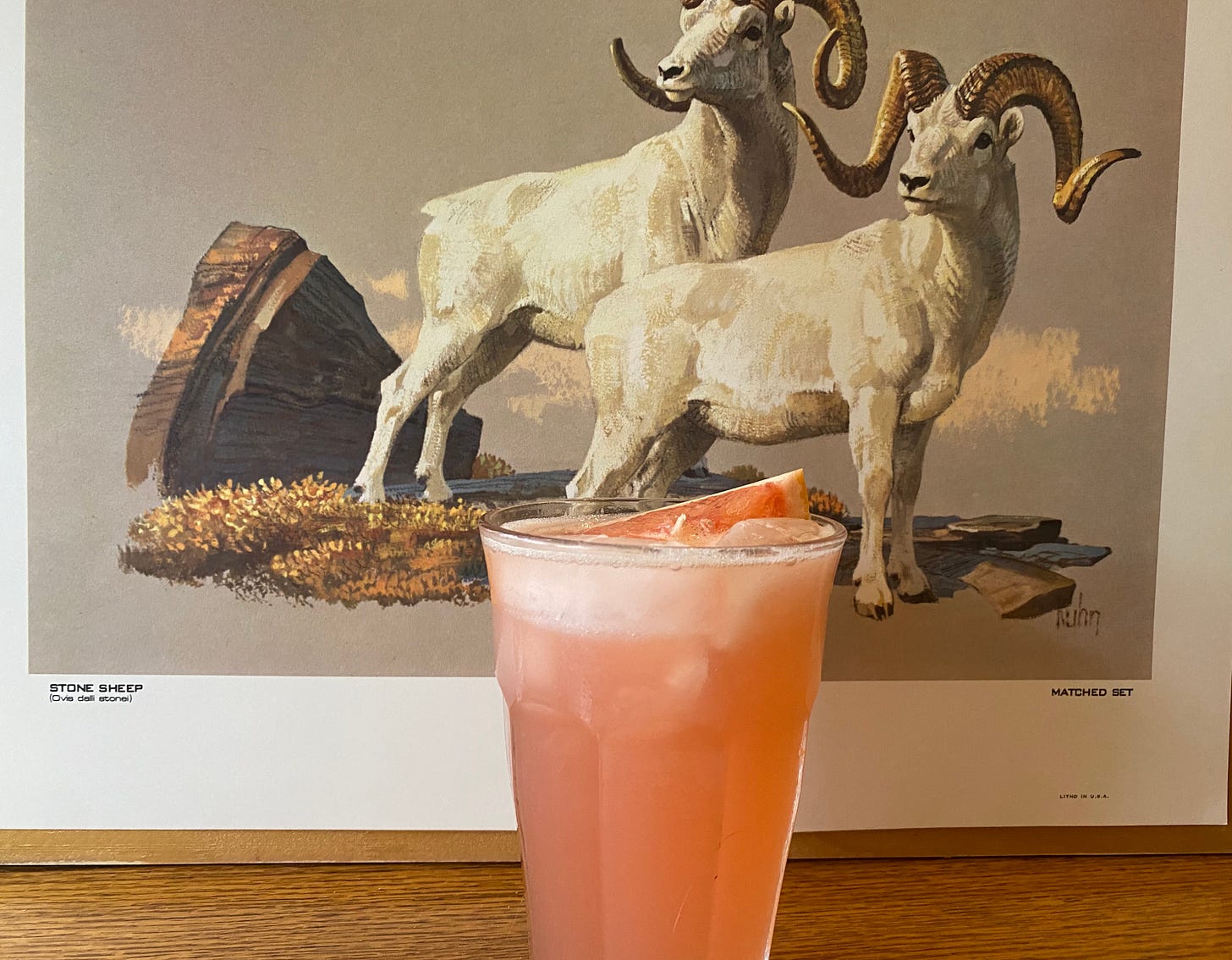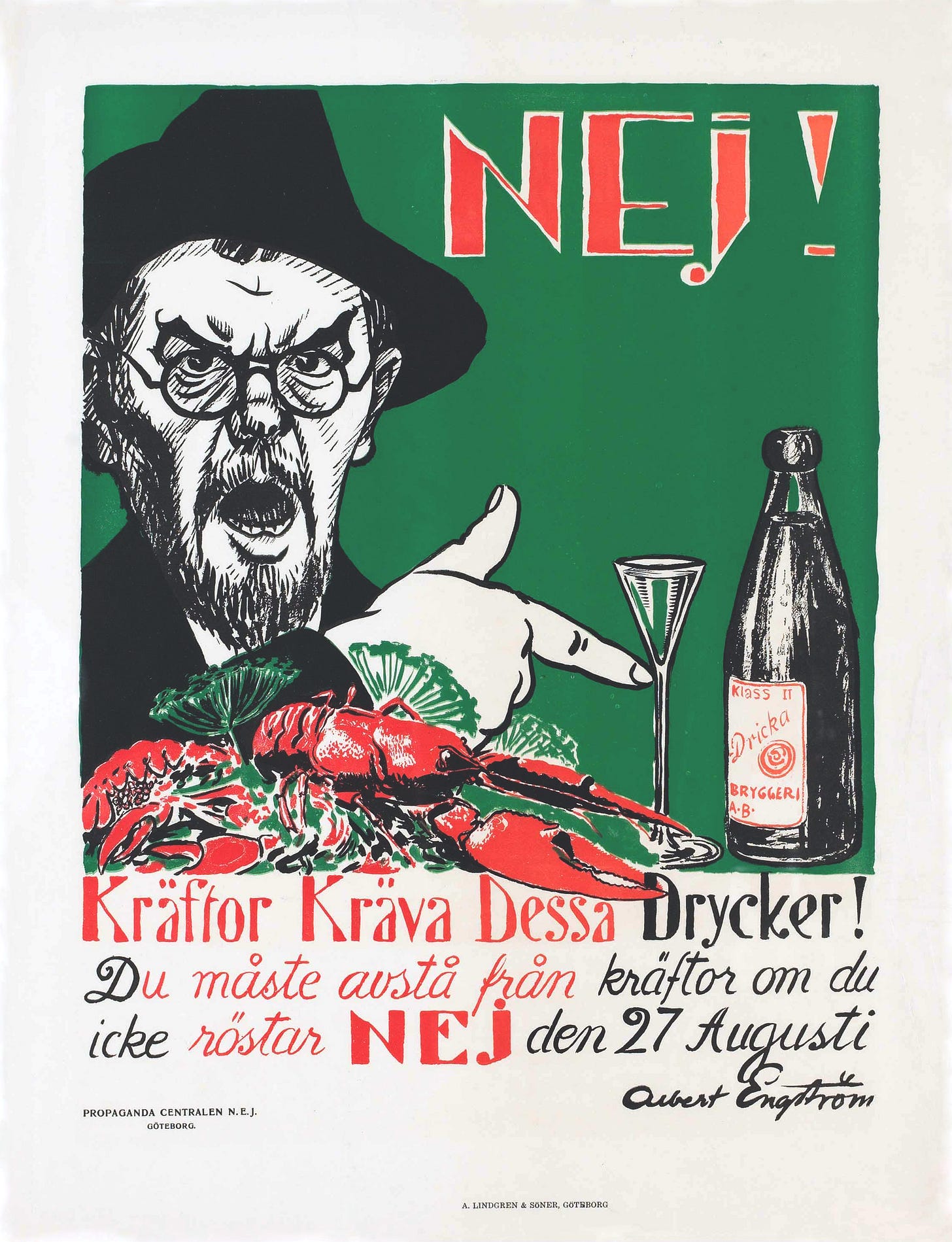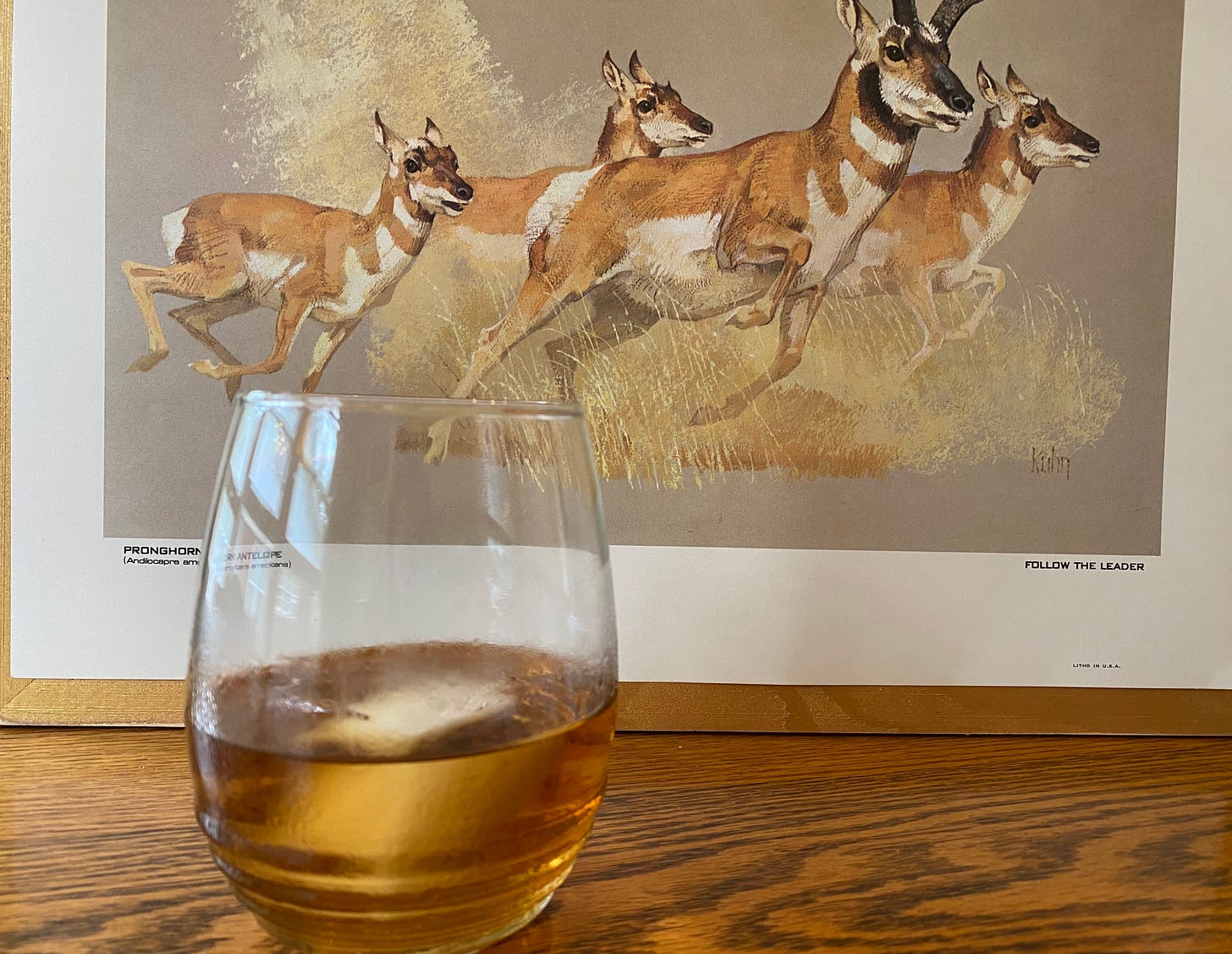Malört Is Good, Actually
I'm seriöus.
There are two ways this could go.
One.
A demon-eyed friend brings you a shot in the bar. “Would you like to try Chicago’s finest wormwood liqueur?” He’s snickering, but the liquid looks honey-colored, harmless. You choked down Goldschläger in college; you can handle whatever this is.
You cannot handle whatever this is. You were expecting sweet; you were delivered bile. The shot tastes like asphalt and citronella, like licking the floor of a shop that sells tires. You scrunch up your face, dialing up the disgust to be a good sport. Your friend laughs, snaps a photo of you, and tags it #MalörtFace.
Two.
A crinkly-eyed bartender gestures toward your empty glass. “If you like amaros, I’ve got something on the far end of the spectrum you could try.” She’s smiling, but she sounds sincere, harmless. “Fair warning—it’s super bitter and intense.” You nod. You took a shot of Fernet Branca in college; you can handle whatever this is.
You take a sip. You were expecting a bolt of lightning; you were delivered static electricity. It tastes like burnt pith, like the ghost of a grapefruit that died under suspicious circumstances. Your lips pucker. “Interesting,” you say. “Can you make a drink with it?”
Welcome to Jeppson’s Malört
If you’ve tried Malört, odds are, you were introduced to it as a punishment or a prank. The wormwood liqueur has been treated like a stunt almost since Swedish immigrant Carl Jeppson debuted it in Chicago in 1933.
Malört is puckeringly bitter and citrus bright, with a finish that burns like righteous indignation. But Americans weren’t braced for that bitterness, and Carl Jeppson Co. quickly started marketing it as a dare. “Are you man enough to drink our two-fisted liquor?” one early advertisement read.
Malört has since become a national meme. Carl Jeppson Co. mostly leaned into the novelty. They crowdsourced online slogan contests and awarded winners like “The Champagne of Pain,” “When You Need to Unfriend Someone In Person,” and “Turning Taste Buds into Taste Foes.” CH Distillery purchased Malört in 2018, but they haven’t distanced themselves from the brand’s roots. Last month, a friend shared a photo of a bar sign: “Malört: Because These Pants Aren’t Going to Shit Themselves.”
As the gospel spreads, the jokes get more cringe-y, the disgust more performative. Malört is polarizing, and I don’t blame anyone for not liking it. But I do think that how we introduce people to food and drink—the story we craft around them—matter almost as much as the taste itself. A good sommelier can help you recognize qualities of wine you might never notice on your own.
I’m not a good sommelier—but I am good at defending the dumb shit I like. So here’s another story we can tell about Malört.
Carl Jeppson didn’t set out to curse a city. Malört is distinctive, but it isn’t unique. Sweden has a long tradition of bitter wormwood spirits known as besk brännvin (loosely—but aptly—”burn wine”).1
Besk was so deeply engrained in Swedish dining and drinking culture, it may have saved the country from Prohibition. Besk was the standard accompaniment for the crayfish parties held each August, where Swedes would wear paper hats and toast the bitterness of a life centered around wormwood liqueurs and Honey, I Shrunk The Lobsters!
In 1922, the country held a referendum to ban alcohol, propelled by the United States’ own temperance movement. Albert Engström, a famous Swedish artist and novelist, responded by distributing propaganda posters about the darkness of a future without besk.
“NEJ!" the poster screamed. “Kräftor kräva dessa drycker!”
In English: “NO! Crayfish require these drinks!”
If anyone knows a spot in town that could produce a frame-quality print of this for me (it’s in the public domain!), HMU.
A brief aside: while I was researching this letter, I had to run a lot of Swedish websites through Google translate. In the process, I ran across this delightful description from the Albert Engström Museum about the artist as a young man:
“Many were the nocturnal mischief he did with his friends. They turned off night lights and replaced signs. The young man is a child again, and he loves it!”
I will be standing on a chair shouting “the young man is a child again, and he loves it!” at every party I attend in the future.2
Anyway, the 1922 referendum failed narrowly—thanks, Albert!—and besk walked on so Malört could sprint headlong into traffic. Today, Jeppson’s is to besk what Kleenex is to “facial tissue.” You can buy other wormwood liqueurs in the U.S., but they tend to the fall in the off-brand binary of Malt-o-Meal or Kashi: a pale imitation or a pointless upgrade.
What do the Swedes (and crayfish) know that we don’t? Maybe just that aversions can be unlearned.
Wormwood—the herb that gives both besk and absinthe their distinctive flavor—has been shorthand for bitterness through recorded history. It even shows up in the Bible a handful of times. My first exposure was in religion class when I was a young warthog.
Specifically, in Proverbs 6:3–5 (New American Bible, St. Joseph Edition):
The lips of an adulteress drip with honey, and her mouth is smoother than oil,
But in the end she is as bitter as wormwood,
as sharp as a two-edged sword.Her feet go down to death,
to the nether world her steps attain.
Catholicism: making adultery sound metal since 30 AD.
There’s an odd parallel here: the Biblical association between wormwood and sin and the modern marketer’s association between wormwood and shitting your pants. Both of them prey on our disgust—and both of them (intentionally or not) make that disgust sound enticing.
That’s a novel quality here in 2021. We have so many things to be disgusted about; most of them don’t make us laugh.
Still, I’m not sure our disgust is all that useful. I like Malört, and not in a pretentious college-essay “defending the dismissed” way. I genuinely enjoy it. I love bitter things that don’t try to cloak themselves in artificial sweetness. I love hyper-specialization in unpopular fields. I love an idea pursued to its inevitable, intemperate conclusion. Malört is the concept of bitterness distilled into a quaffable essence. It’s better at being bitter than bitters.
I wrote about umami last week, so I’ve been reading a lot about the physiology of taste. Our tongues have specific cells—Type II receptors—devoted to detecting only three tastes: sweet, umami, and bitter. We’re used to indulging the first two. We speak in affectionate terms about a “sugar rush” or “umami bomb.” Why, then, do we shrink from the bitter blizzard? Why do we fear Malört’s tempest upon the astringen-sea?
There’s nothing confrontational about Malört except our confrontation with Malört. If you haven’t tried it yet, remember: there are two ways this could go.
The Second Way
Malört cocktails aren’t new—they’re all over Chicago!—but I typically see bartenders use Malört in homeopathic, bar-spoon quantities. They want bitterness, but they don’t necessarily want Malört’s bitterness. As a result, the cocktail ends up trying to compensate for Malört instead of enhance it.
I wanted to find a cocktail that would give Malört its day in the sun—not as a stagehand, but as the leading lady. So I started with riffs on two classics: the Paloma, to play off Malört’s vomit-y grapefruit qualities; and the Negroni, to treat Malört with the respect of a marquee amaro.
Palöma

1.5 ounces Malört
3 ounces fresh-squeezed grapefruit juice
0.5 ounces simple syrup
3 ounces sparkling water
Pinch kosher salt
Combine first three ingredients in a cocktail shaker, add ice, and shake vigorously until the shaker is too cold to hold comfortably. Strain into an ice-filled glass, top with sparkling water, and add a tiny pinch of kosher salt. Garnish with a grapefruit wedge and serve.
Verdict: I would—will—make and drink this again, and I’d recommend it to skeptics. The Malört melded perfectly with the grapefruit juice, and the simple syrup sanded off just enough sharpness. This isn’t a sweet drink, and that’s why I love it. This is for people find who love the idea of a margarita, but find chain restaurant versions sickly sweet. The lesson: treat Malört like a citrus-gored amaro.
Negröni
1.5 ounces Malört
1.5 ounces gin
1.5 ounces Dolin Rouge3
Stir ingredients together in a rocks glass over one large ice cube for 30 seconds. If you’re feeling disrespectful, garnish with an orange twist.
Verdict: Like the palöma, this is a surprisingly drinkable cocktail that shines a big, sunny spotlight on Our Favorite Liqueur. It’s less syrup-y than its Campari-based antecedent and as bitter as a tongue depressor, but you can still pick up some of the botanicals from the gin and the raisin-y vibes of the sweet vermouth. I will say, though: if you’re not already a fan of Malört, this is less likely to convince you.
If you like the distinctive taste of Haterade, share, subscribe, or send to a friend! I am now accepting submissions for offputting newsletter slogans. If you’d like to help pay for an elective cosmetic surgery to replace my tongue receptors with cells that can only taste Jeppson’s Malört, you can also donate: @lizcookkc on Venmo / $lizcookkc on CashApp.
I more frequently see this called “bäsk brannvin” in U.S. beverage writing, an older spelling that few Swedes seem to use. If you know any current Sverige residents, please ask them about this and report back.
Invite me to your parties.
You can use any sweet vermouth, but I wasn’t about to waste Carpano Antica on this. Plus, I find Dolin Rouge a lot less bitter than some other vermouth, which is ideal for this very particular circumstance.





Seriöusly, can we start a Kansas City Kocktail Club?
Where’s your backup singers? WHEN SHE WAS A YOUNG WART—HOOOOOOOOOOG (staccatissimo)!